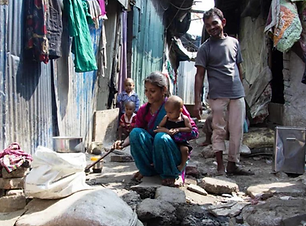Key Landfill Locations

Suwung, Indonesia
About 500 families are estimated to live and work around the Suwung Landfill, scavenging through waste in makeshift huts near the site. These families, many originally from East Java, Lombok, and Nusa Penida, rely on sorting trash by hand for income and currently reside in unsanitary conditions directly adjacent to the landfill.

Deonar, India
The Deonar Landfill in Mumbai, India, is one of Asia’s oldest and largest dumpsites, receiving over 5,000 tons of waste daily. Surrounding it is a vast informal settlement of about 600,000 people, many of whom rely on scavenging and recycling waste for survival. The area faces serious issues with toxic fires, air pollution, and unsafe living conditions.

Truttier Dump, Haiti
About 300–500 families are estimated to live and work in the Truitier landfill (also spelled Truttier) on the outskirts of Port‑au‑Prince’s Cité Soleil, Haiti. They depend on scavenging and sorting through waste—often including medical and sewage materials—to survive. The dump serves as both home and workplace for many of these families, exposing them to severe health and environmental hazards.
The Kiteezi Landfill near Kampala, Uganda, serves as the capital’s main dumpsite, receiving around 1,500–2,000 tonnes of waste daily. As of 2024, approximately 800 to 1,000 informal waste pickers lived and worked at the site, scavenging recyclables like plastics, metals, and cardboard. Based on that, it's estimated that around 150 to 200 families reside and rely directly on Kiteezi for their survival, living in makeshift shelters amid hazardous conditions.
Kiteezi, Uganda
Al-Bab, Syria
Located on the outskirts of Al‑Bab city in northern Syria is an informal dumpsite largely run by displaced families and children, many of whom fled eastern and southern Aleppo countryside. The surrounding informal settlement contains around 40 people in about 10 makeshift tents, and these individuals rely on scavenging trash for survival.
Jakarta, Indonesia
The Bantar Gebang landfill near Jakarta is Southeast Asia’s largest dumpsite, receiving over 7,000–8,000 tonnes of waste daily. An estimated 3,000 to 6,000 families (around 24,000 families according to official data) live and work around its perimeter, scavenging recyclables to survive in extremely hazardous conditions, where fires, pollution, poor sanitation, and landslides are recurring threats.









